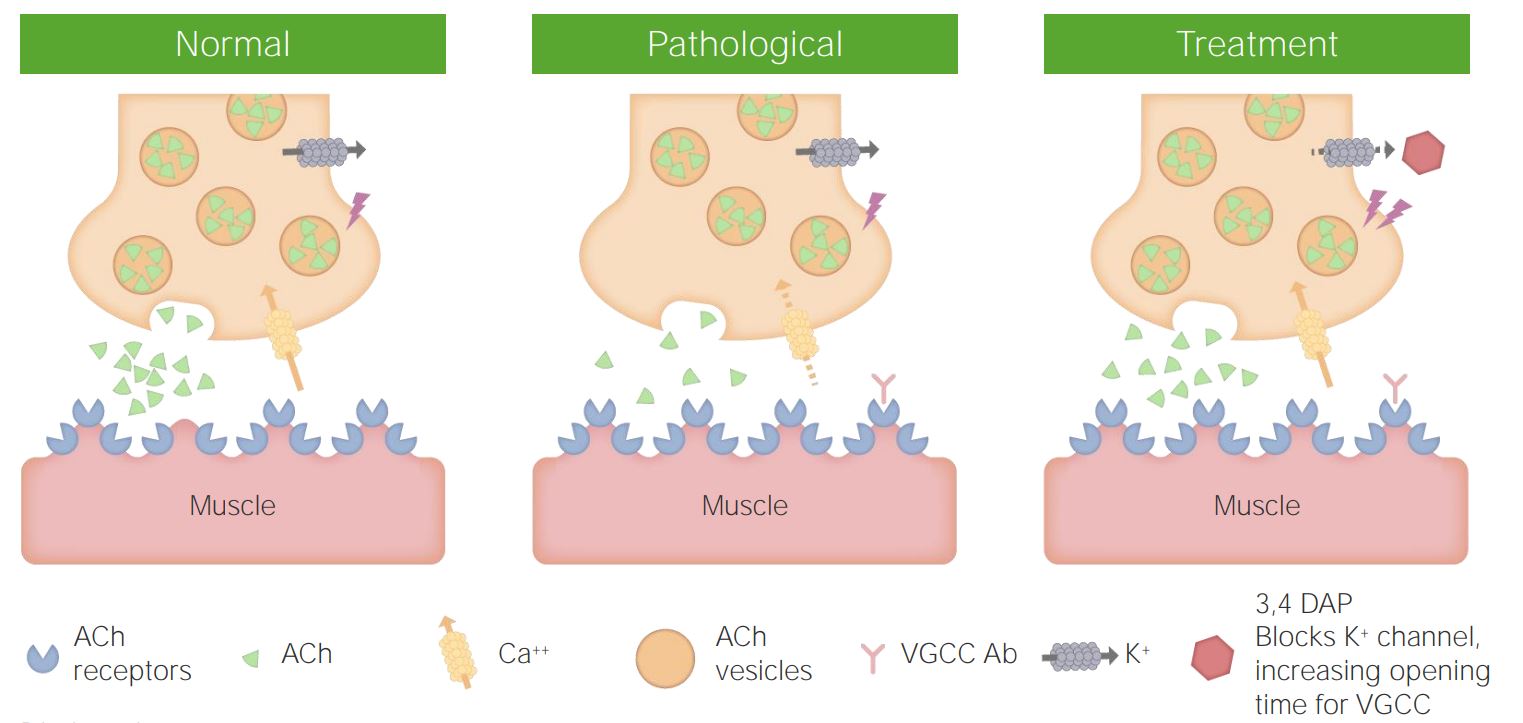Playlist
Show Playlist
Hide Playlist
Case: 42-year-old Man with Weakness
-
Slides Strowd Neoplastic or Paraneoplastic NMJ Disorders.pdf
-
Download Lecture Overview
00:01 In this lecture, we're going to learn about Neoplastic or Paraneoplastic causes of neuromuscular junction disorders. 00:08 We're going to focus on Lambert-Eaton myasthenic syndrome. 00:12 A really rare but fascinating syndrome that you know it when you see it and say you ought to know it so you can see it. 00:20 Let's start with a case. 00:21 This is a 42-year-old man who presents with weakness. 00:25 This 42-year-old man presents for evaluation of weakness and new right upper lobe lung mass. 00:32 He reports three months of blurry vision, sometimes double vision, as well as weakness that began in his arms and have progressed to include his legs. 00:42 He's been unable to ride his motorcycle due to these symptoms. 00:45 He reports a 20-pound weight loss in the last three months. 00:49 He has no fatigable weakness but does report dry mouth, that is also new. 00:54 Examination shows bilateral ptosis, mild dysarthria, proximal upper and lower extremity weakness, normal sensation, and diffuse hyporeflexia. 01:06 So, what's the diagnosis? Well, let's look at those three main features of a peripheral nervous system disorder. 01:13 What's the distribution? What are the sensory findings? What's the reflex exam? And are there any important wildcard symptoms present in this case? The distribution here, involves bulbar weakness. 01:26 We see bilateral ptosis, mild dysarthria, there are bulbar findings, in addition to proximal weakness. 01:33 That's the distribution that doesn't support a muscle localization. 01:37 This doesn't sound like peripheral nerve dermatome. 01:40 This sounds like a neuromuscular junction disorder, proximal weakness with prominent bulbar findings. 01:47 The sensory exam is normal pointing away from a nerve problem and the reflexes show hyporeflexia. 01:53 Not a reflexia likely would see with a nerve problem, but diffuse hyporeflexia that is supportive of a junctional disorder. 02:01 What about wildcard features? Well, here this patient has a right upper lobe lung mass, that's concerning. 02:07 It needs to be further evaluated and a 20-pound weight loss. 02:10 We're worrying about cancer and a possible cancer associated condition like a paraneoplastic disorder. 02:17 Let's look at this patient's chest x-ray. 02:20 We see that here. 02:21 We see the normal findings of the lung and the heart, and this opacity in the right lung, that's concerning for a new mass and needs to be further evaluated in this for a possible lung cancer. 02:35 So what's the diagnosis? Is this myasthenia gravis, organophosphate poisoning, botulism toxicity or Lambert-Eaton myasthenic syndrome? All our neuromuscular junction disorders, all can present with weakness. 02:48 Which one is present in this case? Well, myasthenia gravis could be the case for this patient. 02:56 But with a new lung mass, a 20-pound weight loss, we have to be concerned for an alternative etiology. 03:02 The patient has not ingested organophosphates, and organophosphate poisoning does not sound like, the likely diagnosis for this patient. 03:09 There's no exposure to botulism toxin to suggest botulism or botulism toxin toxicity. 03:16 This is a case of Lambert-Eaton myasthenic syndrome. 03:19 And we see a classic presentation of proximal weakness with prominent bulbar fibers, excuse me, prominent bulbar findings and some other important clinical features that point us in that direction. 03:30 Lambert-Eaton is associated with certain types of cancer and we're concerned that this patient may have a new diagnosis of lung cancer.
About the Lecture
The lecture Case: 42-year-old Man with Weakness by Roy Strowd, MD is from the course Disorders of the Neuromuscular Junctions.
Included Quiz Questions
Which of the following is not a feature of Lambert-Eaton myasthenic syndrome?
- Reversal of symptoms with AChE inhibitor administration
- Proximal muscle weakness
- Autonomic symptoms
- Improves with muscle use
- Association with small cell lung cancer
Which of the following would be atypical of Lambert-Eaton myasthenic syndrome?
- Pupillary findings
- Ptosis
- Mild dysarthria
- Proximal upper and lower extremity weakness
- Impotence
Customer reviews
5,0 of 5 stars
| 5 Stars |
|
5 |
| 4 Stars |
|
0 |
| 3 Stars |
|
0 |
| 2 Stars |
|
0 |
| 1 Star |
|
0 |




